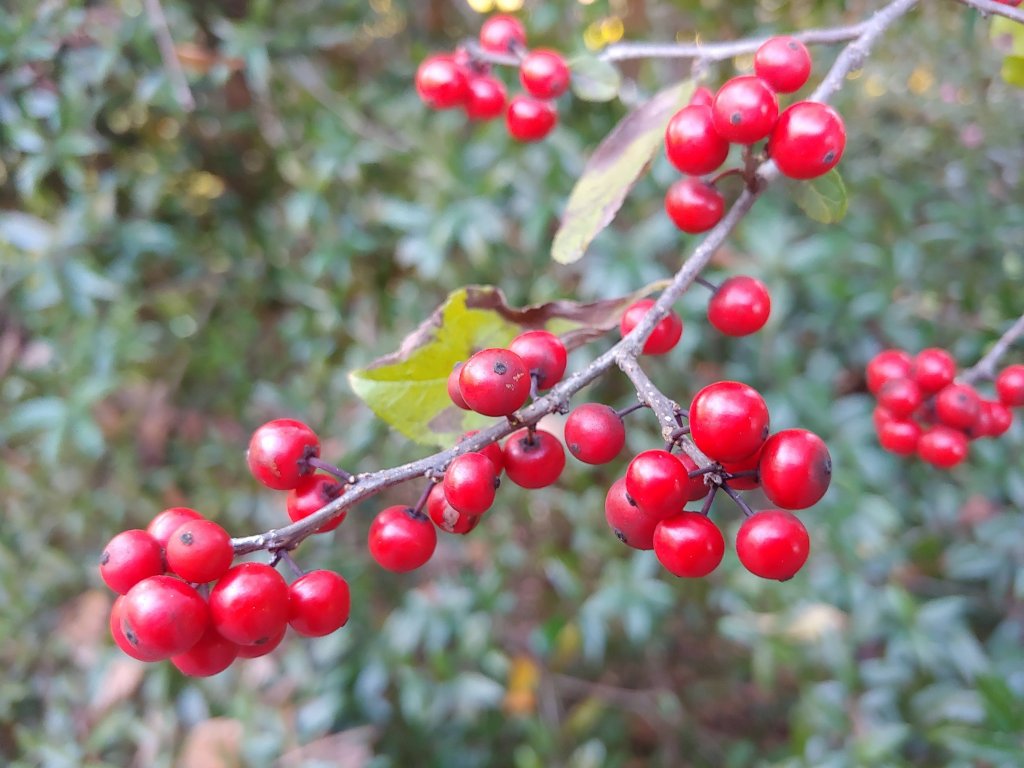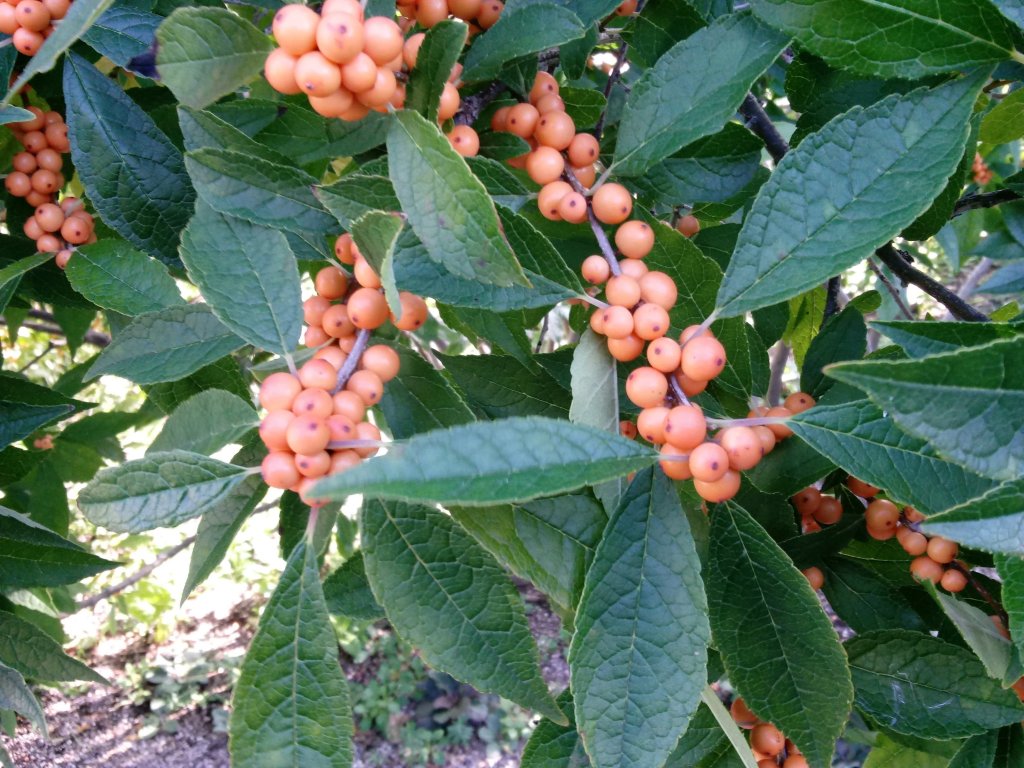I once thought, in error it seems, that there should be no need for a pollinating male with each cluster of female winterberry hollies (Ilex verticillata). Certainly there must be some native holly nearby, or another pollinator in a neighbors’ garden close by. My reward for thinking, no berries in two groupings of winterberries.

This lesson partially learned, a small male planted near the tall cluster beside the driveway brought bunches of berries, though it was planted at the last moment days before the hollies’ flowers faded. I did not consider at the time, though I should claim that I was testing the pollinating range of the male, a smaller, more recently planted group on the far side of the garden in the shade of the bigleaf magnolia (below).

This smaller cluster is disadvantaged by heavier shading, but also by my error in not planting a second male. Two years without berries slipped by, and the third flowering season was missed. But as is often the case, I eventually catch on and now the first few scattered berries on these hollies are apparent. Yes, I am slow to catch on, but ….. oh forget it, I’m slow.
Now that I have caught on, I must plant one or more of the yellow berried winterberries. There is not much space for the planting, but the form of the shrub is unimportant. Without pruning, which I promise will never be done, the winterberry hollies are tall and lanky, so the yellow berried holly can be shoehorned between azaleas in the area beside the drive that will soon grow to become a mass of tall, fragrant deciduous azaleas. Bordered to one side by red berried hollies, and of course the male holly, a yellow berried winterberry (below, at the US Botanic Garden) or two will mingle in between.

I am quite pleased that a bottlebrush buckeye (Aesculus parviflora, below), also in the wide spreading shade of the bigleaf magnolia, flowers despite the lack of sunlight. There is a point when the line is crossed and growth or flowering is diminished, and only the annual reward of bottlebrush blooms convinces me that this spot is not too shaded. I suspect its growth is somewhat limited by this dry shade, but the buckeye stands tall and wide enough, and its flowers are an annual show, though often during the two week period in mid July when I am on business travel.

Two buckeyes more recently planted in damp ground behind the garden’s shed were skimpy from the start, and likely a year or two from being satisfactorily full. These catch several glimpses of sun through the day, and I look forward to the day they have grown into a wide mass to hide the bit of mess behind the shed. I find it easier to plant to hide rather than clean up old messes.
Hollies went out of fashion here decades ago, and for the longest time, the few hollies that were available were all female. Seriously, hollies in landscape situations produced almost no berries. There were a few, which I can not explain. Only recently have hollies become available with pollinators. For some, both male and female are grown together in the same can. Where I work now, English holly is naturalized, so some make plenty of berries. In old Victorian landscapes, female hollies were certainly the most common, and sometimes pruned into formal hedges, with male pollinators nearby serving another purpose, such as a shorn obelisk or some such feature that was separate from the female hedge. In smaller gardens, single female holly trees might have had a bit of male holly discretely grafted onto them. That worked back at a time when gardeners actually took horticulture seriously. Later mow, blow and go ‘gardeners’ were likely to prune off the male scion because they did not know or care how important it was.
Evergreen hollies are popular in the mid Atlantic for privacy hedges and to provide a longer season of color. Deciduous hollies are less commonly planted.
Heck, I did not see a deciduous holly until the mid 1990s, and only because we tried growing them. They were discontinued because we did not sell enough. No one here knows what they are.